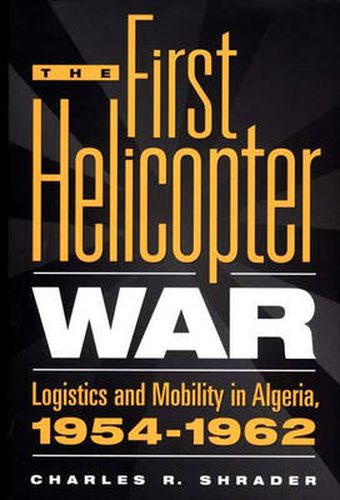Readings Newsletter
Become a Readings Member to make your shopping experience even easier.
Sign in or sign up for free!
You’re not far away from qualifying for FREE standard shipping within Australia
You’ve qualified for FREE standard shipping within Australia
The cart is loading…






Using recently released French official documents and a variety of other sources, this study explains how the French Army, so recently defeated by the Viet Minh insurgents in Indochina, was able to successfully defeat the Algerian nationalist rebels on the battlefield, while nevertheless losing the war at the conference table. This French success, between 1954 and 1962, was due in large part to the superior logistical system of the French Army and the use of the helicopter to enhance French operational mobility. French counter-mobility measures, particularly the construction of heavily defended interdiction zones on the eastern and western borders of Algeria, proved highly effective against the rebels. Such methods essentially cut off the rebel forces from their bases and from sources of supply located outside Algeria, and consequently strangled and destroyed the rebel forces within Algeria. No other work on the Algerian War focuses upon the role of logistics in the outcome of the conflict. The detailed statistical data and comprehensive description and analysis of the logistical organizations and methods of both the French and the nationalist rebels are supplemented by excellent maps. This study also provides useful insights into the nature of the wars of national liberation and counter-insurgency doctrines that dominated military affairs in the mid-20th century.
$9.00 standard shipping within Australia
FREE standard shipping within Australia for orders over $100.00
Express & International shipping calculated at checkout
Stock availability can be subject to change without notice. We recommend calling the shop or contacting our online team to check availability of low stock items. Please see our Shopping Online page for more details.
Using recently released French official documents and a variety of other sources, this study explains how the French Army, so recently defeated by the Viet Minh insurgents in Indochina, was able to successfully defeat the Algerian nationalist rebels on the battlefield, while nevertheless losing the war at the conference table. This French success, between 1954 and 1962, was due in large part to the superior logistical system of the French Army and the use of the helicopter to enhance French operational mobility. French counter-mobility measures, particularly the construction of heavily defended interdiction zones on the eastern and western borders of Algeria, proved highly effective against the rebels. Such methods essentially cut off the rebel forces from their bases and from sources of supply located outside Algeria, and consequently strangled and destroyed the rebel forces within Algeria. No other work on the Algerian War focuses upon the role of logistics in the outcome of the conflict. The detailed statistical data and comprehensive description and analysis of the logistical organizations and methods of both the French and the nationalist rebels are supplemented by excellent maps. This study also provides useful insights into the nature of the wars of national liberation and counter-insurgency doctrines that dominated military affairs in the mid-20th century.